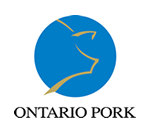Dr. John Harding, University of Saskatchewan
 Summary
Summary
There is evidence to conclude that both sCD163 and the thyroid hormones are potential biomarkers of disease resilience. At present, we have stronger evidence for the thyroid hormones and supporting further investigation for potential use in breeding programs. That said, we do not want to rule out sCD163 at this time. While further investigation is needed, high resting (pre-challenge) levels of sCD163 appear to be associated with lower weight gain following PRRSV challenge (PHGC) and greater sCD163 shedding response appear associated with lower ADG following polymicrobial challenge. In pregnant gilts, the opposite trend was evident with susceptible gilts with higher fetal mortality and fetal viral load showing lower sCD163 levels at pre- and post- late pregnancy PRRSV challenge. The considerable variation in sCD163 levels in gestating sows, particularly in older sows, provides an opportunity to further investigate associations with productivity in healthy farms and in PRRSV outbreaks.
There is overwhelming evidence that both thyroid hormones, T3 and T4, are suppressed following PRRSV infection. This occurs in all age groups including pregnant gilts (and presumable sows as well although not evaluated), near term fetuses, and nursery pigs. Levels also decrease following natural polymicrobial challenge. The degree of suppression is associated with ADG in nursery-finisher pigs, with earlier rebound associated with improved ADG.
Following PRRSV challenge, both thyroid hormones are depressed in high viral load and meconium stained fetuses suggesting they are contributors to fetal demise.
Project No: 17-11
Time period: Jan 2018-Oct 2020
Funding provided by Ontario Pork